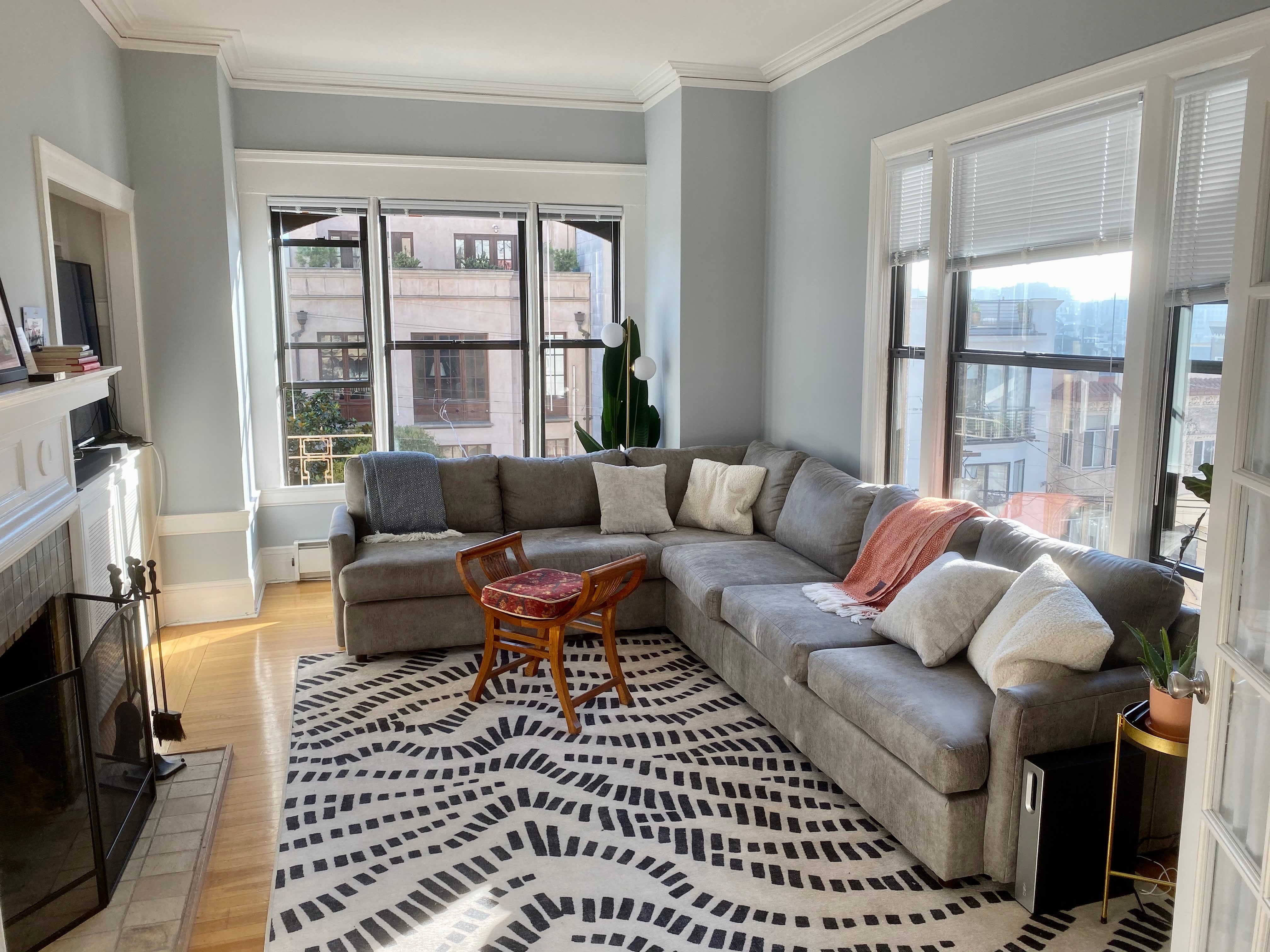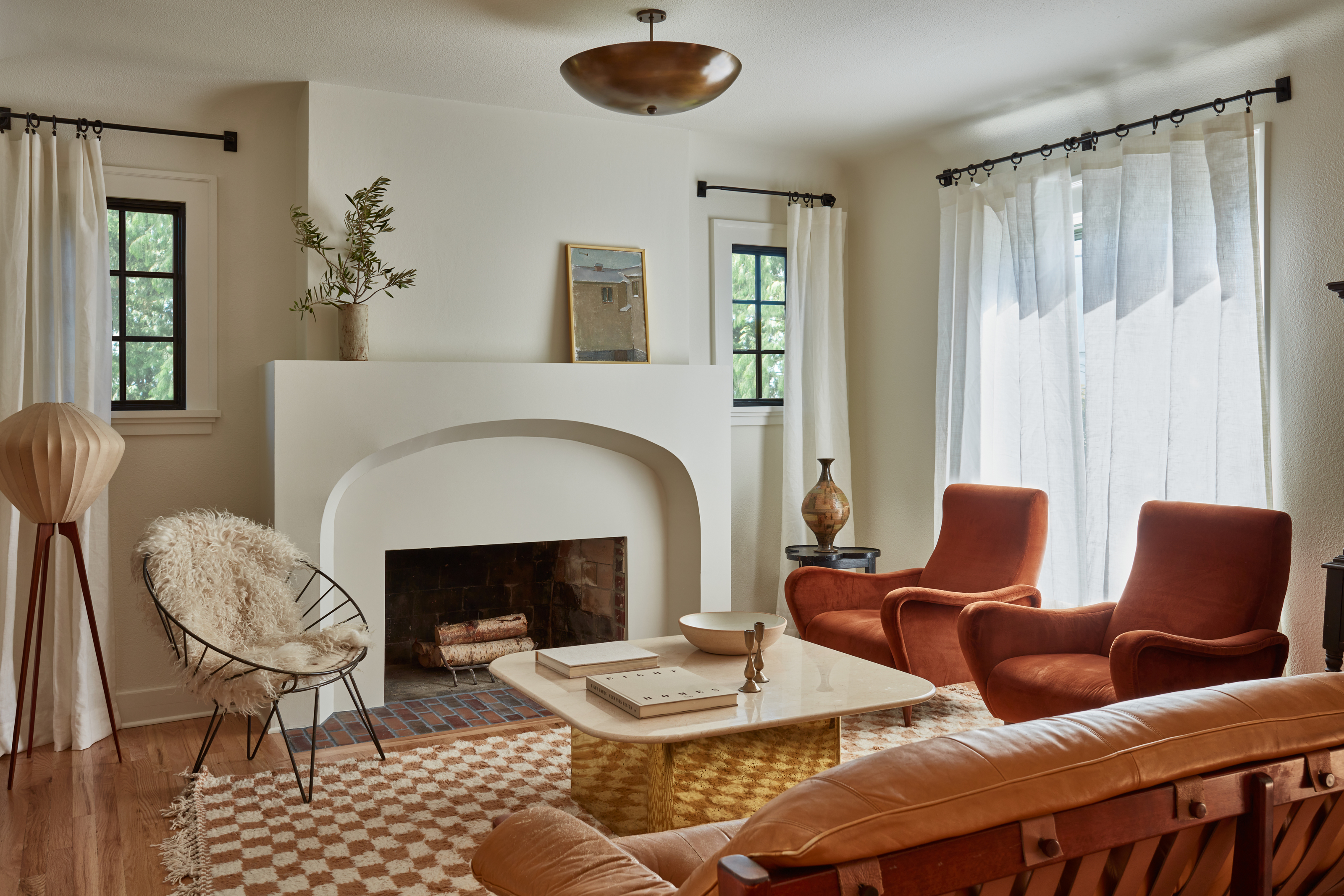As an Amazon Associate CoffeeXplore.com earns from qualifying purchases.
Do You Need a Coffee Table? Alternatives & Design Tips
Do you find yourself constantly rearranging furniture, trying to create the perfect living room flow? Or maybe you’re overwhelmed by clutter and can’t seem to find a place for everything. The age-old question of whether or not a coffee table is truly necessary plagues many homeowners and apartment dwellers alike. You might be questioning its functionality, especially in smaller spaces, and wondering if it’s just another piece of furniture destined to become a catch-all for clutter.
The need for a coffee table truly depends on individual factors like available space, lifestyle habits, and preferred interior aesthetics. While not mandatory, a coffee table can offer convenience and style; however, other pieces, like ottomans or side tables, could be good alternatives.
This article will delve into the nuances of this design dilemma, exploring the pros and cons of coffee tables, examining alternative options, and providing practical tips to help you decide what’s best for your living room. We’ll be looking at how different lifestyles and room sizes affect this decision, along with exploring innovative decorating strategies for spaces without coffee tables, based on current design trends.
Key Facts:
* Space Saver: Skipping a coffee table can make a small living room feel significantly larger and more open.
* Functionality: Coffee tables primarily serve as a convenient surface for drinks, snacks, books, and remotes.
* Alternatives Abound: Ottomans, nesting tables, and side tables offer similar functionality with different space-saving and stylistic benefits.
* Lifestyle Matters: How you use your living room (entertaining, relaxing, family activities) significantly impacts the need for a coffee table.
* Design Flexibility: The absence of a coffee table can lead to more creative and versatile room layouts.
Is a Coffee Table Really Necessary for Your Living Room?
Whether you need a coffee table depends on your lifestyle, living room size, and how you use the space. It offers functionality and aesthetics, but alternatives exist. This isn’t a one-size-fits-all answer. Let’s break down the key considerations.
Assessing the Functional Benefits of a Coffee Table
Coffee tables provide a surface for drinks, snacks, books, and remotes. Many offer storage options, reducing clutter and enhancing convenience in your living room. They act as a central hub for activity, making everyday items easily accessible.
Here’s a closer look at the functional benefits:
- Surface Area: Provides a stable place to set down drinks, snacks, or a laptop.
- Convenience: Keeps essential items within easy reach while you’re relaxing on the sofa.
- Storage: Many coffee tables come with drawers, shelves, or lift-top mechanisms, offering valuable storage space for books, magazines, remote controls, and other items.
- Organization: Helps to keep your living room tidy and organized by providing a designated place for frequently used items.
- Versatility: Can be used for many purposes, like a place to play boardgames.
How Your Living Room’s Size Impacts the Need for a Coffee Table
In small living rooms, a coffee table might make the space feel cramped. In larger rooms, it can help fill space and tie seating arrangements together. The size of your living room is a crucial factor in determining whether a coffee table is a good fit.
| Room Size | Coffee Table Impact | Alternatives to Consider |
|---|---|---|
| Small Living Room | Can make the space feel cramped and hinder movement. | Ottomans, nesting tables, side tables, or no table at all. |
| Large Living Room | Can help to fill empty space, define the seating area, and create a sense of balance. | A larger coffee table or multiple smaller tables. |
Tip: Measure your living room and the available space between your sofa and other furniture before choosing a coffee table or an alternative. Aim for 14-18 inches of clearance between the coffee table and the sofa.
Do You Need a Coffee Table?
You do not necessarily need a coffee table. Alternatives like ottomans or side tables can provide similar functions if they suit your needs, lifestyle, and space better. There’s no hard and fast rule. It’s about finding what works best for you.
Considering Your Lifestyle and Daily Use
If you often host guests, a coffee table provides a surface for serving. For relaxation, it holds remotes and snacks. For families, ottomans are safer alternatives. Your lifestyle is a key indicator.
- Frequent Entertainers: A coffee table provides a convenient surface for serving drinks and appetizers.
- Relaxation Focused: A coffee table keeps essentials like remotes, books, and snacks within easy reach.
- Families with Young Children: A soft ottoman might be a safer alternative, reducing the risk of bumps and bruises.
- Minimalists: If you prefer a clutter-free environment, you might choose to forgo a coffee table altogether.
- Gamers: If you are an enthusiastic gamer, having a solid coffee table is practical and useful.
Evaluating Design Preferences and Aesthetics
If you prefer minimalist or open-concept designs, skipping the coffee table might suit your style. If you enjoy decorating, a coffee table can enhance your decor. The aesthetic appeal is just as important as function.
- Minimalist Design: A clean, uncluttered look often benefits from the absence of a coffee table.
- Open-Concept Spaces: Skipping the coffee table can enhance the sense of spaciousness.
- Traditional Style: A coffee table often serves as a focal point in a traditional living room design.
- Eclectic Style: You have more freedom to choose unconventional alternatives or mix and match different pieces.
- Decor: You can place flowers, candles or books to enhance the decor.
Key Takeaway: The decision of whether or not to have a coffee table hinges on a balance between functionality, aesthetics, and your personal lifestyle.
What are the Best Alternatives to a Traditional Coffee Table?
Alternatives to coffee tables include ottomans, nesting tables, side tables, and trunks/chests. Each offers different benefits in terms of functionality, style, and space-saving. Let’s explore some popular options.
Ottomans: Versatile and Comfortable Options
Ottomans can serve as footrests, extra seating, and even storage. They add warmth and texture to your living room and are safer for children than traditional coffee tables. Ottomans are a multi-functional choice.
- Versatility: Can be used as a footrest, extra seating, or a surface for trays.
- Comfort: Often upholstered, providing a soft and comfortable surface.
- Storage: Many ottomans come with built-in storage, perfect for blankets, pillows, or toys.
- Safety: A softer alternative to traditional coffee tables, making them a good choice for families with young children.
- Style: Available in a wide variety of shapes, sizes, colors, and materials.

Nesting Tables: Flexible and Space-Saving
Nesting tables are ideal for small spaces. You can separate or stack them as needed, providing flexibility and surface area without taking up too much room. Nesting tables offer a dynamic solution.
- Space-Saving: Can be stacked together when not in use, freeing up valuable floor space.
- Flexibility: Can be easily moved around and used individually or as a group.
- Versatility: Can be used as side tables, end tables, or even as a makeshift coffee table.
- Style: Available in a variety of designs, from modern to traditional.
Side Tables: Convenient and Compact
Side tables placed beside sofas or chairs provide easy access to drinks and other items. They are useful in both small and large living rooms. Side tables provide targeted convenience.
- Convenience: Keeps drinks, remotes, and other essentials within easy reach.
- Compact Size: Takes up minimal floor space.
- Versatility: Can be used in a variety of settings, including living rooms, bedrooms, and home offices.
- Style: Adds a decorative, balanced and architectural touch to your living room.
How to Style a Living Room Without a Coffee Table?
To style a living room without a coffee table, use alternative furniture like ottomans or side tables, focus on vertical space, and create focal points with artwork or lighting. A coffee table-free living room doesn’t mean sacrificing style.
Utilizing Vertical Space and Wall Decor
Use shelves, artwork, and mirrors to draw the eye upward and create visual interest in a living room without a coffee table, maximizing the sense of space. Verticality adds dimension.
- Shelving: Install floating shelves to display books, plants, and decorative objects.
- Artwork: Hang a large piece of art or a gallery wall to create a focal point.
- Mirrors: Use mirrors to reflect light and make the room feel larger and brighter.
- Tall Plants: Add height and visual interest with tall potted plants.
Creating Focal Points with Alternative Furniture
Create focal points in a living room without a coffee table by using alternative furniture like ottomans, side tables, or accent chairs, strategically placed to draw attention. Redirect the eye strategically.
- Ottoman: Use a large, stylish ottoman as a centerpiece.
- Side Tables: Arrange multiple side tables in a cluster or place them strategically around the seating area.
- Accent Chairs: Use a pair of eye-catching accent chairs to create a conversation area.
- Area Rug: Define the seating area with a large, patterned area rug.

Tip: Remember to maintain a sense of balance and proportion when arranging furniture in a living room without a coffee table.
FAQs About Do You Need a Coffee Table?:
Is it okay not to have a coffee table?
Yes, it is perfectly okay not to have a coffee table. It depends on your personal preferences, lifestyle, and the size and layout of your living room.
What is an alternative to a coffee table?
Alternatives include ottomans, nesting tables, side tables, garden stools, trunks, or even a grouping of smaller poufs.
Is a coffee table important?
A coffee table can be important for functionality and aesthetics, providing a surface for drinks and completing a seating arrangement, but it is not essential.
How to style a living room without a coffee table?
Use alternative furniture, focus on vertical space with shelves and artwork, and create focal points using lighting or a large area rug.
Do people even use coffee tables anymore?
Yes, many people still use coffee tables, but there’s a growing trend towards alternative furniture options or no coffee table at all, especially in smaller spaces.
What is the point of a coffee table?
The main point of a coffee table is to provide a convenient surface within easy reach of seating for drinks, snacks, books, and other items.
Does every living room need a coffee table?
No, not every living room needs a coffee table. Consider your needs and preferences.
What can I use instead of a coffee table if I have a small space?
Nesting tables, side tables, or a small ottoman are excellent alternatives for small spaces.
Are coffee tables outdated?
Coffee tables are not outdated, but their necessity is being re-evaluated, with many people opting for alternative furniture or no coffee table at all.
How do I choose the right coffee table alternative for my living room?
Consider your lifestyle, the size of your living room, your design preferences, and the functionality you need.
Summary:
A coffee table isn’t always essential. Its necessity depends on your space, lifestyle, and preferences. Alternatives like ottomans, nesting tables, and side tables can provide similar functionality and style. Ultimately, the decision of whether or not to include a coffee table in your living room is a personal one. There’s no right or wrong answer. By carefully considering your needs, lifestyle, and the design of your space, you can create a living room that is both functional and beautiful, with or without a coffee table. What are your thoughts on coffee tables? Share your experiences and preferences in the comments below!

